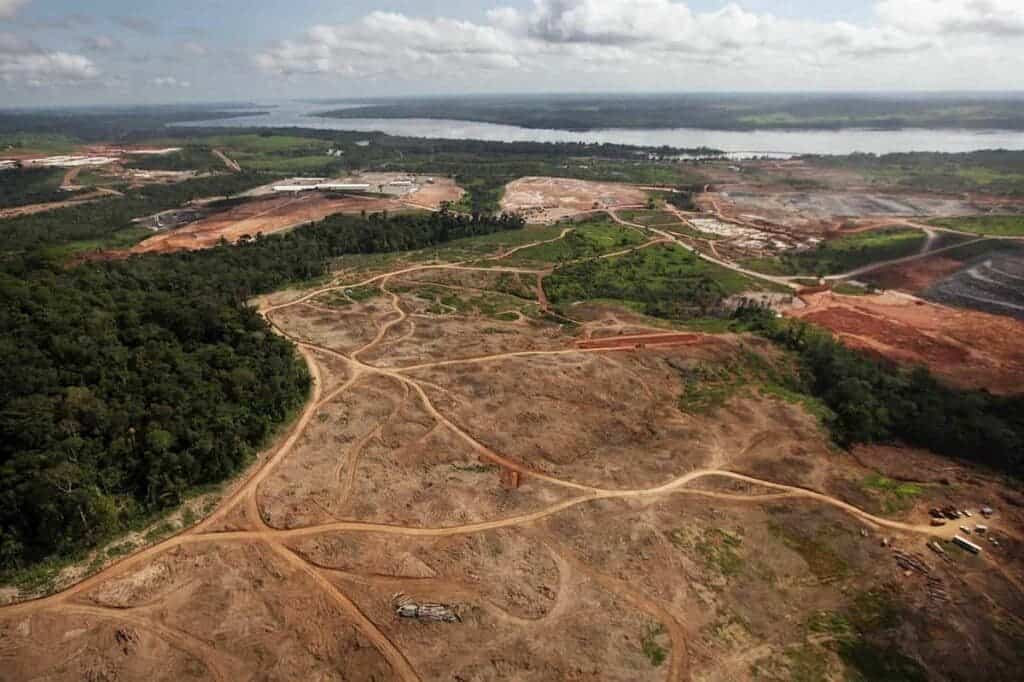The world lost almost 120,000 square kilometers of forest in 2019 or about 46,000 square miles–an area the size of North Korea or Malawi. Agriculture, illegal logging, wildfires, and corruption are to blame. Brazil, Bolivia, and Congo were some of the countries with the highest losses last year.

The World Resources Institute (WRI), which published the data, said almost a third of that loss, an area the size of Switzerland, came from tropical forests, highly important for climate regulation and for their outstanding biodiversity.
The new statistics end a two-year decline on global deforestation and represent the third highest year of forest loss since the turn of the century. Brazil, the Democratic Republic of Congo (DRC) and Bolivia were some of the countries with the largest forest loss, according to the report.
With the administration of President Jair Bolsonaro disregarding the environment, Brazil had the highest rate of deforestation in 2019. About 46% happened in primary forest, clearing out 14.000 squared kilometers (5,405 squared miles). The forest loss was higher in 2019 than at any other time during the previous 13 years.
Mining, agribusiness and forest fires were only some of the drivers behind Brazil’s deforestation. Environmental organizations have warned that the rhetoric of Bolsonaro has encouraged farmers to invade forests, even in protected areas. The country has seen record forest fires last year.
The DRC ranked second with 4,750 square kilometers of primary forest lost in 2019 and 12,000 square kilometers of general tree cover lost. The numbers were slightly lower than in 2018 but remain close to the record tree-loss seen by the country in 2016 and 2017
Deforestation in the DRC is mainly explained by small-scale agriculture. Nevertheless, the report warned over the expansion of industrial deforestation and that the country is on track to losing all its primary forests by the end of the century if the current deforestation rates continue.
Meanwhile, Bolivia’s forests also had an especially bleak year, losing more trees since data began to be collected in 2001. The country lost 1.3% of its tree cover last year, explained by record-breaking wildfires in the second half of the year. The fires were especially severe in the department of Santa Cruz.
The forest fires in Bolivia were mainly intentional to convert forest to farmland, local NGOs have warned. President Evo Morales signed in 2019 a decree to expand land for the agribusiness sector, which partly explains last year’s deforestation rate – likely to follow the same trend this year.
Some countries are making progress
It wasn’t all bad news for the world’s forests in 2019, as some countries are actually making efforts to bring down their deforestation rates.
Forest loss declined in Indonesia in 2019, accumulating three years in a row with lower deforestation. Primary forest loss especially plunged, reaching its lowest number since 2003. The decline is explained by stronger forest protection policies implemented in the country since its 2016 fire crisis.
Colombia also reported last year its first reduction in primary forest loss in five years. Deforestation dropped 35% from a 17-year high seen in 2018. Nevertheless, WRI warned that deforestation could be again on the rise this year in Colombia, based on preliminary data that shows agribusiness moving into national parks.
At the same time, data from West Africa shows that forest loss declined 50% in Ghana and Côte d’Ivoire in 2019, following an increase in 2018. The drop is explained by ambitious conservation initiatives and pledges from countries and companies to end deforestation.
Frances Seymour, a senior fellow at WRI, told The Guardian that the level of global forest loss was unacceptable and that it was clear what was needed to reverse the trend. “If governments put into place good policies and enforce the law, forest loss goes down. But if governments relax restrictions on burning, or signal an intent to open up indigenous territories for commercial exploitation, forest loss goes up.”
The international community could help address the problem, Seymour said, introducing economic or market incentives for protecting forests. There are key steps the governments should embrace, she said, such as increase the monitoring and enforcement and provide the poor with other alternatives rather than forest exploitation.


